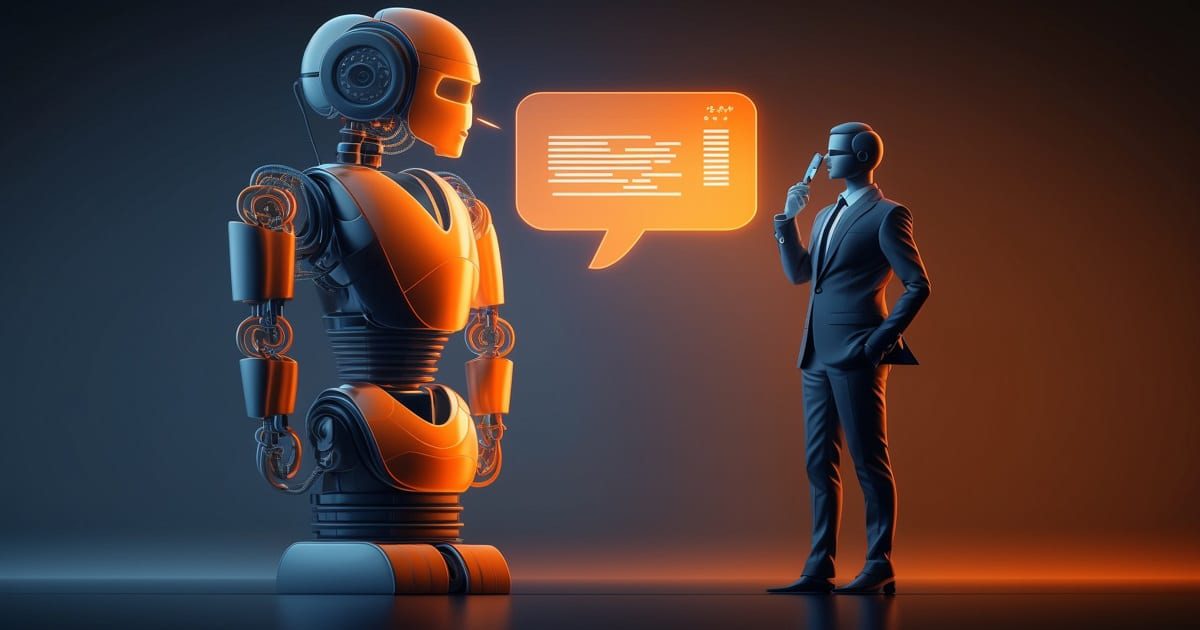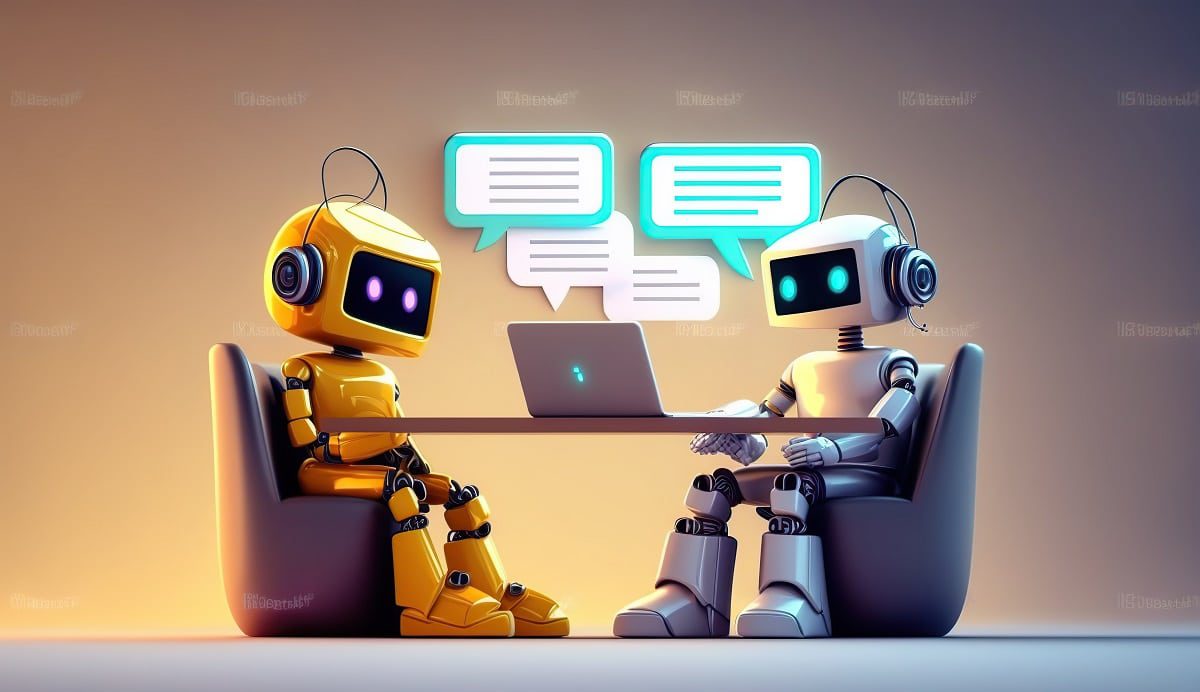Does Your Business Really Need a Chatbot? Exploring the Pros and Cons

In today’s fast-paced digital world, businesses are constantly seeking innovative ways to improve customer service, streamline operations, and stay ahead of the curve. This is where chatbots, virtual assistants capable of engaging in conversation with users, have emerged as a powerful tool. But before jumping on the chatbot bandwagon, the question arises – does your business truly need one?
What is a Chatbot?
A chatbot is a software program that simulates human conversation through text or voice interactions. They are designed to mimic the way humans communicate and can be used for a variety of purposes, such as:
- Providing customer service: Chatbots can answer frequently asked questions (FAQs), troubleshoot common problems, and even take orders or reservations.
- Marketing and sales: Chatbots can engage with potential customers, qualify leads, and even close deals.
- Education and training: Chatbots can be used to deliver educational content, answer questions, and provide feedback to students.
- Entertainment: Chatbots can be used to play games, tell jokes, and even create stories.
Chatbots can be simple or complex, depending on their purpose. Some chatbots are rule-based, meaning they follow a set of predefined rules to respond to user input. Others are AI-powered, meaning they use machine learning and natural language processing (NLP) to understand user input and respond more naturally and engagingly.
Diving into the Benefits: Why Chatbots Can Be a Game Changer
The potential benefits of implementing a chatbot are numerous. Firstly, they offer 24/7 availability, ensuring prompt responses to customer inquiries regardless of time zone or business hours. This translates to improved customer service, keeping your customers satisfied and fostering positive brand experiences. Additionally, chatbots can increase efficiency by handling multiple customer queries simultaneously, freeing up your human customer service team to focus on more complex issues.
Furthermore, chatbots can deliver cost-effectiveness by automating basic customer interactions. This can help reduce the dependency on human support agents, particularly during peak times, leading to potential cost savings.
While the decision to implement a chatbot requires careful consideration, there are several undeniable advantages they offer to businesses:
1. Enhanced Customer Service:
- 24/7 Availability: Unlike human agents who require breaks and follow specific working hours, chatbots are available around the clock, 365 days a year. This ensures that customers can receive immediate assistance regardless of time zone or schedule.
- Faster Response Times: Chatbots can handle inquiries and answer frequently asked questions (FAQs) instantly, eliminating waiting times for customers and reducing overall response times.
- Improved Customer Satisfaction: By providing immediate answers and assistance, chatbots can significantly improve customer satisfaction, leading to a better brand experience.
2. Increased Efficiency:
- Handling Multiple Inquiries Simultaneously: Unlike human agents who can only handle one customer at a time, chatbots can manage multiple customer interactions concurrently, improving overall efficiency and reducing customer wait times.
- Automating Repetitive Tasks: Chatbots can handle repetitive tasks like answering FAQs, scheduling appointments, or providing order tracking information, freeing up human agents to focus on more complex customer issues.
- Streamlining Workflows: Integrating chatbots into existing workflows can automate routine tasks, allowing businesses to optimize their operations and improve overall productivity.
3. Cost-Effectiveness:
- Reduced Staffing Costs: Implementing a chatbot can potentially reduce the need for additional customer service representatives, leading to cost savings in the long run. However, it’s important to remember that this doesn’t eliminate the need for human oversight entirely.
- Lower Training Costs: Training new customer service agents can be expensive and time-consuming. Chatbots require minimal ongoing training compared to human agents, reducing associated costs.
- Improved First Contact Resolution: Chatbots can resolve common customer issues quickly, potentially reducing the need for escalation to human agents, which often requires more time and resources.
4. Data Collection and Insights:
- Gathering Customer Feedback: Chatbots can be used to collect valuable customer feedback through simple surveys or questionnaires. This data can be used to improve customer service, product offerings, and overall business strategies.
- Understanding Customer Behavior: By analyzing customer interactions with chatbots, businesses can gain valuable insights into customer behavior, preferences, and pain points. This information can be used to personalize the customer experience and improve marketing efforts.
- Identifying Trends and Opportunities: The data collected through chatbots can help businesses identify trends and opportunities for improvement. This can lead to proactive decision-making and a competitive advantage
5. Personalized Customer Engagement:
- Offering Product Recommendations: Chatbots equipped with AI and machine learning capabilities can personalize interactions by analyzing customer data and offering product recommendations tailored to individual needs and preferences.
- Providing Proactive Support: Chatbots can anticipate customer needs and proactively offer support or assistance, enhancing the overall customer experience.
- Multilingual Support: Chatbots can offer multilingual support, ensuring accessibility to a broader customer base and facilitating communication in various languages.
It’s important to remember that these benefits are not universally applicable and their effectiveness depends on various factors like the type of chatbot, industry, and implementation strategy. However, by understanding the potential advantages, businesses can make informed decisions about whether a chatbot is the right fit for their specific needs.
The Other Side of the Coin: Unveiling the Drawbacks
While chatbots offer numerous potential benefits, they also come with certain limitations and drawbacks that need careful consideration:
1. Lack of Personalization:
- Limited Ability to Understand Complex Issues: Chatbots, despite advancements in NLP, may struggle to grasp the nuances of human communication and the complexities of certain customer issues. This can lead to misunderstandings and frustrations for customers seeking personalized assistance.
- Inability to Empathize: Chatbots lack the human element of empathy and emotional intelligence. This can be a significant drawback in situations where customers require emotional support or understanding, potentially leading to negative customer experiences.
- Generic Responses: Chatbots rely on pre-programmed responses and decision trees, which can result in generic and impersonal interactions, failing to provide the same level of care and attention as a human customer service representative.
2. Initial Setup and Maintenance Costs:
- Investment in Technology: Implementing advanced AI-powered chatbots can be expensive, requiring significant upfront investment in technology and development. This can be a barrier for smaller businesses with limited resources.
- Ongoing Maintenance and Updates: Chatbots require ongoing maintenance and updates to ensure they function effectively and provide accurate information. This can require additional resources and expertise, adding to the overall cost
3. Technical Limitations:
- Misinterpreting User Input: Chatbots, particularly simpler ones, can misinterpret user input due to limitations in their ability to understand natural language. This can lead to confusion and frustration for customers, hindering the effectiveness of the chatbot.
- Limited Problem-Solving Capabilities: Chatbots may struggle to handle unexpected situations or complex problems outside their pre-programmed responses. This necessitates human intervention, potentially negating the benefits of automation.
- Security and Data Privacy Concerns: Collecting and storing customer data through chatbots raises concerns about security and data privacy. Businesses need to ensure they implement robust security measures and comply with relevant data privacy regulations.
4. Negative Impact on Brand Image:
- Poorly Designed Chatbots: A poorly designed chatbot that delivers inaccurate information, provides generic responses, or fails to resolve customer issues can negatively impact brand image and customer trust.
- Overreliance on Automation: Overreliance on chatbots without providing alternative channels for human interaction can create a perception of the business being impersonal and uncaring, potentially damaging the brand image.
- Ethical Considerations: Businesses need to consider the ethical implications of using chatbots, ensuring transparency about their use and avoiding any misleading practices that could erode customer trust.
It’s crucial to weigh these drawbacks alongside the potential benefits to determine if a chatbot aligns with your business objectives and target audience. By understanding the limitations and addressing them effectively, businesses can leverage the power of chatbots while mitigating potential risks.
How To Make a Chatbot?

Creating a chatbot can involve various approaches, ranging from user-friendly platforms to more complex coding endeavors. Here’s a breakdown of the different methods:
Using DIY Chatbot Platforms:
- Suitable for: Businesses with limited technical expertise or budget constraints seeking basic functionalities.
- Process: These platforms offer drag-and-drop interfaces and pre-built templates, allowing you to create chatbots without extensive coding knowledge. You can typically customize the chatbot’s responses, design its flow, and integrate it with your website or social media accounts.
- Examples: Chatfuel, ManyChat
Building a Chatbot with Code:
- Suitable for: Businesses with developers on their team or those seeking more advanced functionalities and complete control over the chatbot’s design and capabilities.
- Process: This approach requires programming skills and familiarity with specific frameworks and libraries. Popular options include:
- Programming languages: Python, Java
- Frameworks: Microsoft Bot Framework, Dialogflow
- Complexity: Building a complex AI-powered chatbot from scratch requires significant technical expertise and resources.
Hiring a Chatbot Development Company:
- Suitable for: Businesses lacking the in-house expertise or resources to build a chatbot themselves but seeking a customized solution.
- Process: Collaborate with a chatbot development company to outline your requirements, discuss functionalities, and define the chatbot’s design and functionalities. They will handle the development and deployment of the chatbot based on your specifications.
- Costs: This option typically involves the highest cost compared to other methods.
Types of Chatbot Solutions
The world of chatbots offers a diverse landscape of solutions catering to different business needs and budgets. Here’s a breakdown of the prevalent types:
1. DIY Chatbot Platforms:
These user-friendly platforms empower businesses to create chatbots without extensive coding knowledge. They typically offer drag-and-drop interfaces and pre-built templates, making them ideal for simple tasks like answering FAQs or offering basic customer support.
- Examples: Chatfuel, ManyChat
- Pros: Easy to use, affordable, suitable for basic functionalities.
- Cons: Limited capabilities, lack of customization, might not scale effectively for complex needs.
2. AI-powered Chatbots:
These advanced solutions utilize machine learning and natural language processing (NLP) to deliver more natural and engaging conversations. They can understand complex queries, learn from user interactions, and even adapt their responses over time.
- Examples: IBM Watson Assistant, Amazon Lex
- Pros: Advanced capabilities, ability to handle complex inquiries, personalized interactions.
- Cons: Higher development and maintenance costs, require technical expertise, and potential for bias in AI algorithms.
3. Live Chat vs. Automated Chatbots:
While often discussed alongside chatbots, live chat functionalities provide real-time interactions with human customer service representatives. This can be crucial for addressing complex issues or situations requiring human empathy and understanding.
- Live Chat: Enables real-time interaction with human agents, offers personalized support, builds stronger customer relationships.
- Automated Chatbots: Handle routine inquiries and basic tasks 24/7, provide instant answers, improve efficiency.
The choice between these options depends on your specific needs. Live chat might be ideal for situations requiring personalized attention and complex problem-solving, while automated chatbots can efficiently handle routine tasks and basic inquiries.
4. Hybrid Chatbots:
Combining the strengths of both live chat and automated chatbots, hybrid solutions offer a comprehensive approach to customer service. They typically start with an automated chatbot to handle basic inquiries and escalate complex issues seamlessly to live chat agents for human interaction.
- Pros: Offers both automation efficiency and human touch, caters to diverse customer needs, improves overall customer experience.
- Cons: Requires integration of both technologies, can be more complex to implement and manage.
Ultimately, choosing the right type of chatbot solution hinges on your specific business objectives, resources, and target audience. Carefully consider your requirements and evaluate the available options to find the best fit that aligns with your long-term goals.
5. AI Chatbot
AI chatbots, also known as conversational AI or chatbots, are computer programs that are designed to simulate conversation with human users. They are often used in online applications, such as websites, messaging apps, and social media platforms. AI chatbots can be used for a variety of purposes, including:
- Providing customer service: AI chatbots can answer frequently asked questions, troubleshoot common problems, and even take orders or reservations.
- Marketing and sales: AI chatbots can engage with potential customers, qualify leads, and even close deals.
- Education and training: AI chatbots can be used to deliver educational content, answer questions, and provide feedback to students.
- Entertainment: AI chatbots can be used to play games, tell jokes, and even create stories.
Case Studies: Chatbots in Action
Examining how other businesses have leveraged chatbots can offer valuable insights into both the potential success and pitfalls associated with their implementation. Here are two contrasting case studies:
Success Story: Sephora’s AI Chatbot Enhances Customer Experience
Problem: Sephora, a leading cosmetics retailer, faced challenges in providing immediate product information and personalized recommendations to a large customer base.
Solution: Sephora implemented an AI-powered chatbot named “Beauty Insider on Messenger.” This chatbot was equipped with information on Sephora’s product portfolio and could answer customer queries about specific products, offer personalized recommendations based on individual preferences, and even provide makeup tutorials.
Results: The chatbot resulted in a significant increase in customer engagement and sales. Customers appreciated the 24/7 availability and the convenience of receiving immediate answers and personalized recommendations. Additionally, the chatbot helped reduce the workload of human customer service representatives, allowing them to focus on more complex customer interactions.
Key Takeaways: Sephora’s success highlights the potential of AI-powered chatbots to enhance the customer experience by providing personalized interactions, increasing accessibility, and improving operational efficiency.
Learning from Failure: Domino’s Chatbot Experiment Fizzles Out
Problem: Domino’s, the pizza giant, aimed to streamline the ordering process and improve customer convenience by introducing a chatbot for taking pizza orders.
Solution: Domino’s launched a chatbot named “Dom” on Facebook Messenger. This chatbot allowed customers to place orders through text messages, selecting pizzas, sides, and customizing their orders.
Results: Despite initial excitement, the chatbot faced challenges in understanding complex customer requests and handling unexpected situations. Additionally, some customers found the conversational interface frustrating and preferred the ease of traditional online ordering methods.
Domino’s ultimately discontinued the use of Dom due to negative customer feedback and limited overall benefit.
Key Takeaways: This case study illustrates the importance of carefully considering user needs and expectations when implementing chatbots. Additionally, it emphasizes the necessity of ensuring the chatbot’s capabilities effectively address the targeted tasks and functionalities to avoid negative user experiences.
These contrasting case studies demonstrate the potential benefits of chatbots when implemented thoughtfully and aligned with customer needs. It’s essential to learn from both successes and failures when making decisions about incorporating chatbots into your business strategy.
How to Decide If Your Business Needs a Chatbot?
Before you jump on the chatbot bandwagon, it’s crucial to carefully assess if this technology aligns with your specific business needs and objectives. Here’s a structured approach to help you make an informed decision:
1. Consider your customer base and their preferences:
- Do your customers value immediate responses and self-service options, or do they prefer the human touch?
- What communication channels do your customers prefer for interacting with your business? (e.g., website, social media, phone)
- What are the common questions and requests your customers have?
2. Evaluate your current customer service needs:
- Are you facing challenges with high volumes of inquiries or long response times?
- Do you have repetitive tasks like answering FAQs or scheduling appointments that could be automated?
- Are you looking for ways to improve efficiency and cost-effectiveness in your customer service operations?
3. Analyze the costs versus the potential benefits:
- Compare the upfront investment and ongoing maintenance costs of a chatbot to the potential return on investment (ROI) in terms of improved customer satisfaction, efficiency gains, and cost savings.
- Consider the resources required to implement, maintain, and monitor a chatbot effectively.
4. Conduct a pilot test (optional):
If you’re unsure about the effectiveness of a chatbot, consider running a pilot test with a limited group of customers. This can help you gather valuable feedback and refine your strategy before a full-scale implementation.
Here are some additional factors to consider:
- Industry: The suitability of chatbots can vary depending on your industry. For businesses dealing with complex transactions or requiring highly personalized interactions, a chatbot might not be the optimal solution.
- Compliance: Ensure your chatbot adheres to relevant data privacy regulations and ethical guidelines.
- Data Security: Implement robust security measures to protect sensitive customer data collected through chatbots.
By carefully considering these factors and conducting a thorough evaluation, you can make an informed decision about whether a chatbot is the right fit for your business. Remember, chatbots should be viewed as a tool to enhance, not replace, human interaction in your customer service strategy.
Final Thoughts: The Future of Chatbots in Business
Chatbots have become an integral part of the evolving business landscape, offering the potential to streamline operations, improve customer service, and unlock new avenues for engagement. However, it’s crucial to remember that chatbots are not a one-size-fits-all solution. Their effectiveness depends heavily on careful planning, thoughtful implementation, and ongoing optimization based on user feedback and evolving needs.
The future of chatbots is promising, with advancements in AI and NLP expected to further enhance their capabilities and broaden their applications. Businesses that leverage them strategically, keeping in mind the needs and preferences of their customers, stand to gain a competitive advantage in the increasingly digital and automated world of commerce.

